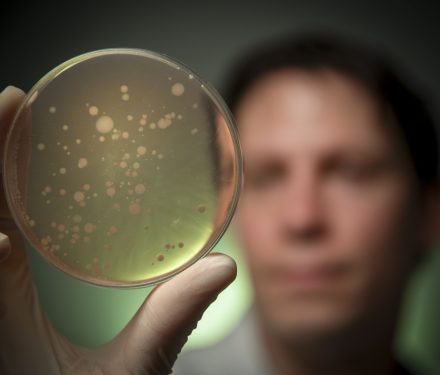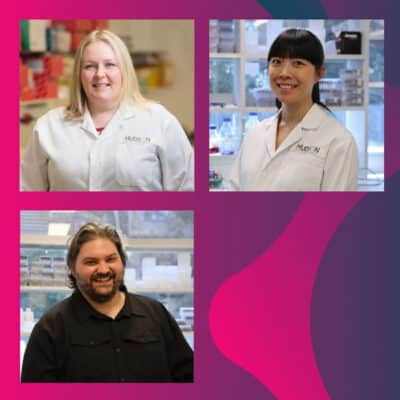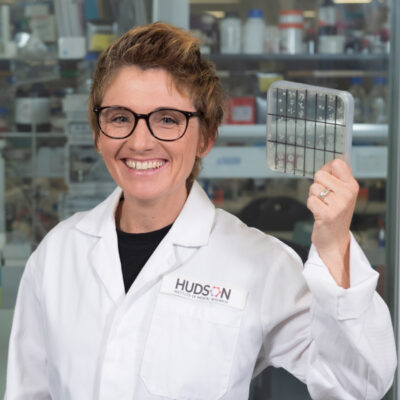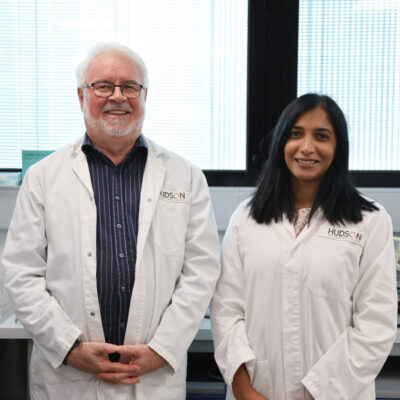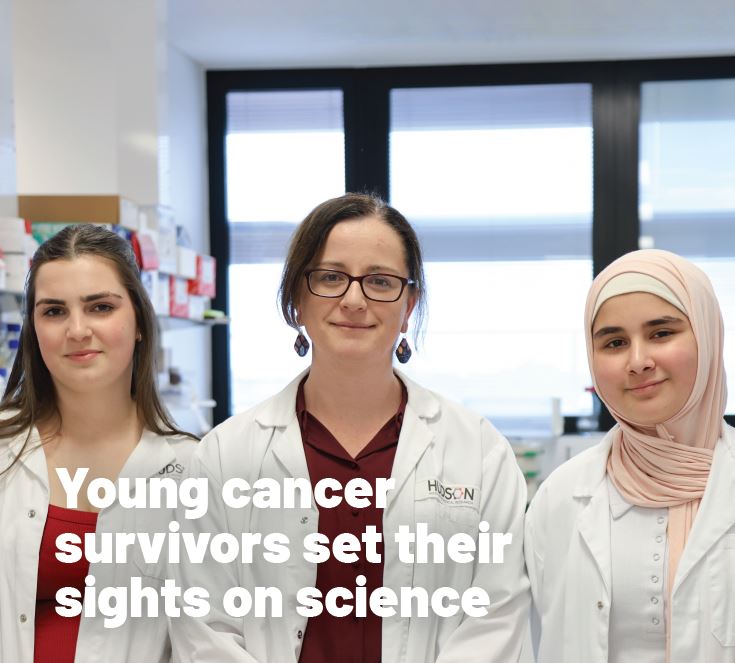Gut feeling leads to major NHMRC grant to investigate immunity
By Hudson Institute communications
New and improved treatments for many serious ailments could follow a prestigious $5 million NHMRC Synergy grant to a team led by Hudson Institute of Medical Research scientists.
The ground-breaking project will explore new medical frontiers to probe how our innate immune system distinguishes ‘friend from foe’; how it interacts with resident microbe differently from pathogens and how it shapes the microbiome.
This will improve our understanding of why an illness develops and how best to treat it.
Importantly, in an era where antibiotic resistance threatens to limit treatments of bacterial infections, this program will develop alternatives, such as new ways of manipulating our immune systems to fight infections and identifying ‘good’ bacteria that can be administered to restore balance.
The research will investigate the human microbiome—all the microbes, including bacteria, fungi, protozoa and viruses that live on and inside our healthy bodies.
The research team
The 2020–2024 NHMRC Synergy Grant unites four world-leading experts—Hudson Institute Associate Director and Monash University Professor Paul Hertzog, Professor Elizabeth Hartland (Hudson Institute and Monash University), Dr Samuel Forster (Hudson Institute) and Professor Christine Wells (University of Melbourne).
The multidisciplinary team has expertise in innate immune signalling, commensal and pathogenic bacteria, systems biology bioinformatics and bioengineering. In addition they will use cutting-edge techniques and develop new ones.
Professor Hertzog is particularly interested in the body’s innate immune response, while Professor Hartland specialises in how pathogenic bacteria can subvert these natural defences.
Dr Forster developed methods to culture most human gastrointestinal microbiota that identified 1000 new gut bacteria types, and Professor Wells is an expert in computational and systems biology approaches to determine cell identity.
Why the human microbiome?
The human microbiome holds the key to how many illnesses develop and play out in our bodies.
Humans are mostly made up of microbes—more than 100 trillion. Those in the gut, particularly in the large intestine, play an important role in health and disease.
This project will use a unique library of microbiome components to determine how they interact with innate immune cells of the intestine to maintain a healthy state.
It will investigate what happens during disease and how we can reverse it to restore health using next generation therapies with personalised/precision medicine.
Researchers will also investigate how to manipulate our body’s immune system to maintain a healthy microbiome.
“You have a microbiome essentially everywhere a part of your body is exposed to the outside,” said Professor Hertzog. “This sort of approach will have an impact on a range of diseases.”
At the forefront of technology
In a nutshell, the project’s leaders will use their combined expertise to determine:
- How the immune system distinguishes friend from foe (commensal or ‘friendly’ microbes from pathogenic microbes)
- How the innate immune system shapes the microbiome, and vice versa
- How the interaction between the immune system and microbe changes in different organs.
Researchers will use and develop new technologies including genomics and systems biology pipelines, bioengineering organ-on-chip technology and a unique library of commensals.
Knowledge gained will enable the scientific community to define the microbiome community’s composition and how it responds in the intestine to various factors that can affect it.
The overall aim is to facilitate the development of next-generation diagnostics and therapeutics across a range of conditions.
Next steps
Professor Hertzog is excited about the opportunity to further understand immune responses. While knowledge in this dynamic field is improving, he says there are still many “known unknowns”. But using a ‘systems-wide’ approach enables us to identify what these are.
Professor Hertzog hopes the data generated will spark more research across numerous conditions, as technology now allows it to be generated and stored in a way that can be readily accessed and understood.
“We’ll be generating enough information for thousands of projects,” he says. “Even though it’s complicated, we now have computer systems that can actually make sense of it. It’s amazing.”
“If someone had told me 20 years ago that we’re going to generate this much data, I would have said ‘that’s useless because there’s no way we can deal with it’.”
NHMRC Synergy Grants support outstanding multidisciplinary teams of investigators to work together to answer major questions that cannot be answered by a single investigator.
What is the human microbiome?
The Human Genome Project found that the human genome contains only 20,000–25,000 protein-coding genes, about a fifth of what was expected. To find the missing pieces, researchers looked for other sources of genetic material that contribute to human function.
One was the human microbiome. The microbiome is the collective genomes of the microbes (composed of bacteria, bacteriophage, fungi, protozoa and viruses) that live inside and on the human body. We have about ten times as many microbial cells as human cells.
Contact us
Hudson Institute communications
t: + 61 3 8572 2761
e: communications@hudson.org.au
About Hudson Institute
Hudson Institute’ s research programs deliver in three areas of medical need – inflammation, cancer, women’s and newborn health. More
Hudson News
Get the inside view on discoveries and patient stories
“Thank you Hudson Institute researchers. Your work brings such hope to all women with ovarian cancer knowing that potentially women in the future won't have to go through what we have!”


